Cisco CCNP SWITCH Spanning Tree Protocol (STP)
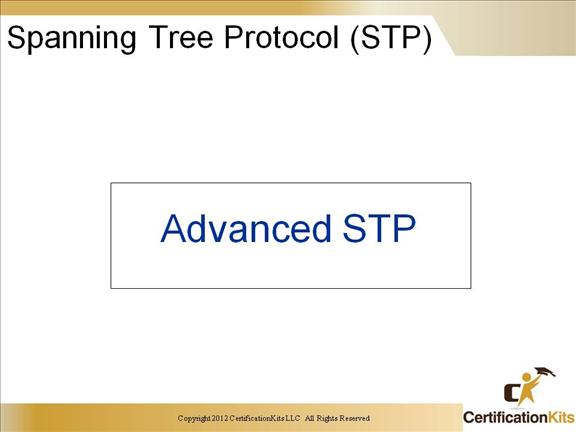
Cisco CCNP SWITCH Rapid Spanning Tree Protocol(RSTP)
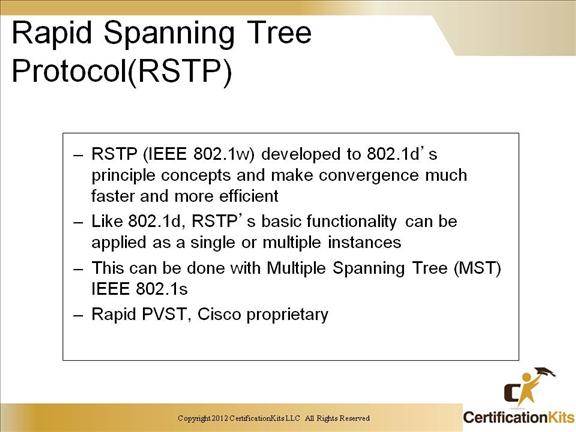
Root Bridge in RSTP is elected just like 802.1d. After all switches agree on the Root, the following port roles are determined
1. Root Port – The one switch port on each switch that has the best root path cost to the root
2. Designated Port – The port on a network segment that has the best root path cost to the root
3. Alternate Port – Port that has an alternate path to the Root, different that the path the Root Port takes.
4. Backup Port – Port that provides a redundant (but less desirable) connection to a segment where another switch port connects. If that common segment is lost, the switch may or may not have a path back to the root
Cisco CCNP SWITCH Rapid Spanning Tree Protocol(RSTP)
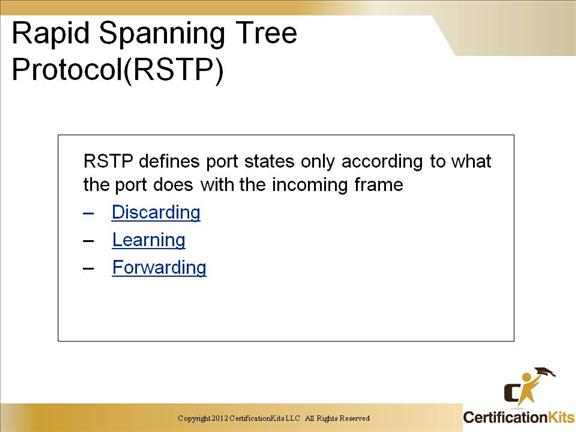
Discarding – Incoming frames are simply dropped, no MAC addresses are learned
Learning – Incoming frames are dropped, but MAC addresses are learned
Forwarding – Incoming frames are forwarded according to MAC addresses that have been learned
Cisco CCNP SWITCH Rapid Spanning Tree Port Types
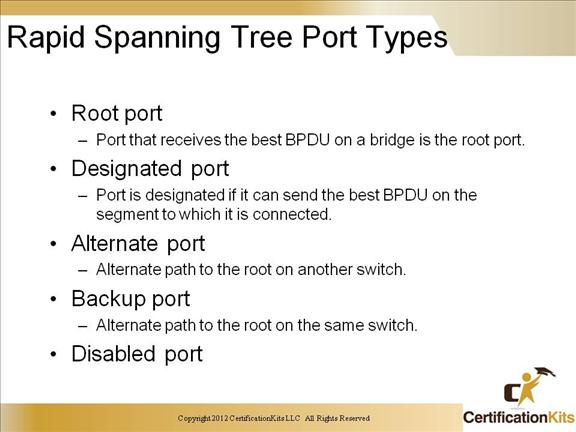
There are only three port states left in RSTP that correspond to the three possible operational states. The 802.1D disabled, blocking, and listening states are merged into a unique 802.1w discarding state.
Cisco CCNP SWITCH Multiple Spanning Tree Protocol (MST)
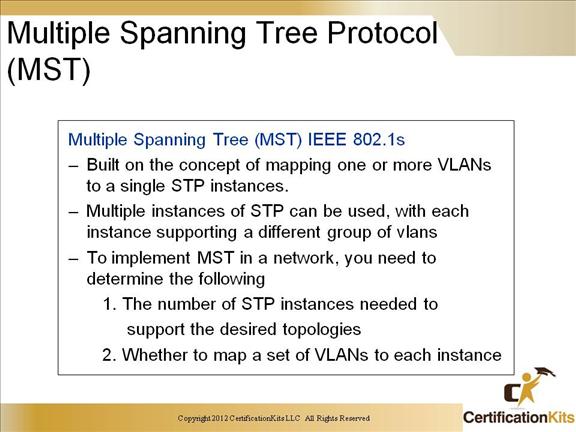
MST can be implemented where having PVST running causes too much load on the resources of the switch. It allow you to group vlans together so you can have fewer instances of spanning tree running on the switch.
MST configuration is manual as there no current method to propagate this info as in VTP.
The following must be done in order:
Enable MST on the switch by defining the region:
Switch(config)# spanning-tree mode set
Enter the MST configuration: Switch(config)# spanning-tree mst configuration
Assign a region configuration name (up to 32 char):
Switch(config)# name name
Cisco CCNP SWITCH Multiple Spanning Tree Protocol (MST)
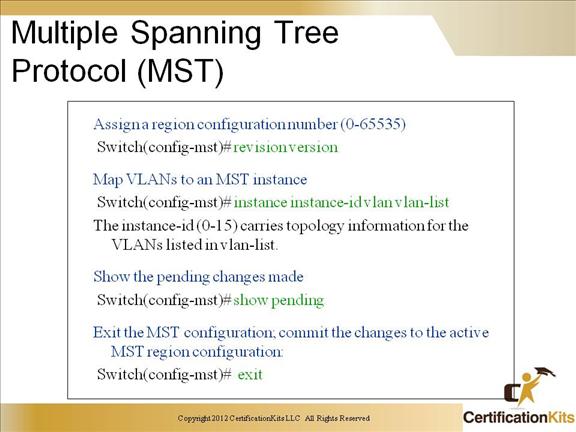
Rapid Spanning Tree Protocol (RSTP) is an evolution of the Spanning Tree Protocol (802.1D standard) and provides for faster spanning tree convergence after a topology change. The standard also includes features equivalent to Cisco PortFast, UplinkFast and BackboneFast for faster network reconvergence. The configuration revision number give you a means to track changes to the MST region. Each time you make changes, you should increment the revision accordingly on each router with the same number.
Cisco CCNP SWITCH Potential STP Problems
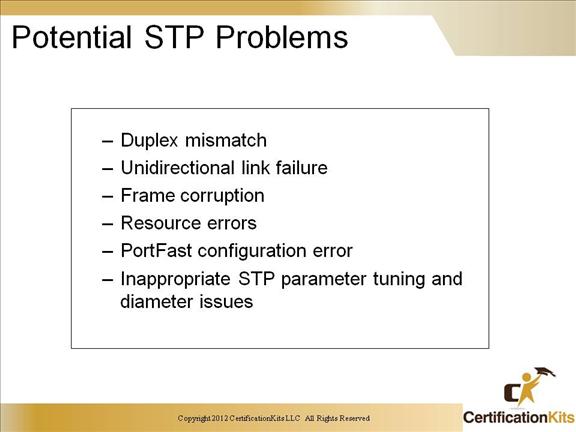
Listed on the slide are potential Spanning Tree Problems. The problems can be a result of problems are wither layer 1 or 2 of the OSI reference model.
Cisco CCNP SWITCH Troubleshooting STP
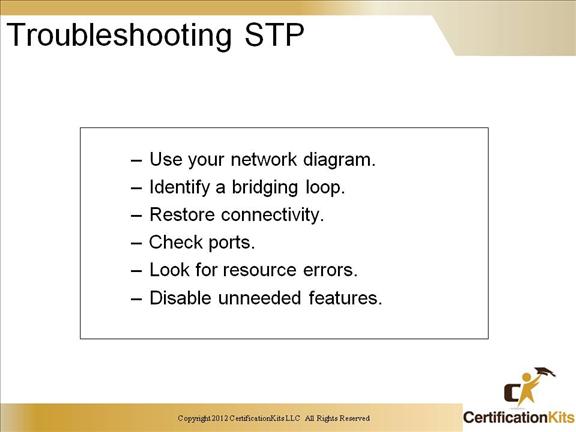
Network documentation is crucial in troubleshooting STP problems. When a bridge loop occurs, CPU utilization on associate switch will most likely hit 100% utilization as all available CPU resources will be utilized.
Cisco CCNP SWITCH Spanning Tree debug Commands
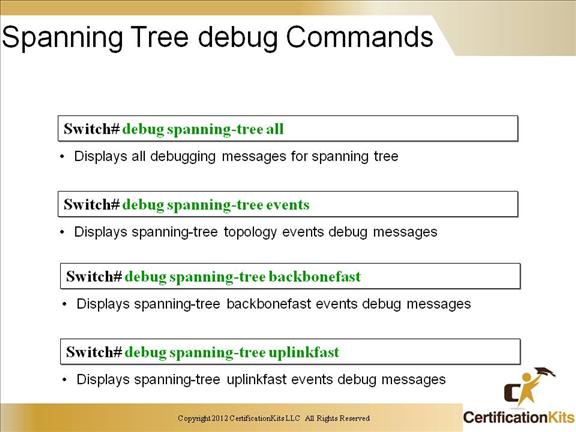
Always utilize Cisco debug commands with caution as most are CPU intensive and could bring down an operational network
